Manual installation: Difference between revisions
No edit summary |
No edit summary |
||
| Line 56: | Line 56: | ||
[[Image:Swnd_24 20131202 09.03.jpg|left|thumb|400px]] Select destination folder of client installation. Use "Browse..." to select or create destination folder. Always create a separate server and client folder. Never install them in the same folder. | [[Image:Swnd_24 20131202 09.03.jpg|left|thumb|400px]] Select destination folder of client installation. Use "Browse..." to select or create destination folder. Always create a separate server and client folder. Never install them in the same folder. | ||
<br style="clear: both" /> | <br style="clear: both" /> | ||
[[Image: | [[Image:Swnd_23 20131202 09.03.jpg|left|thumb|400px]] Create or select installation folder of client. Then click "Next>>" on previous dialog. | ||
<br style="clear: both" /> | <br style="clear: both" /> | ||
[[Image: | [[Image:Swnd_25 20131202 09.04.jpg|left|thumb|400px]] RMI port should be equal to the server RMI port. Normaly leave default. Click "Next>>". | ||
<br style="clear: both" /> | |||
[[Image:Swnd_26 20131202 09.04.jpg|left|thumb|400px]] If server and client aren't installed on the same PC then define the IP address of server PC. Click "Next>>". | |||
<br style="clear: both" /> | |||
[[Image:Swnd_27 20131202 09.04.jpg|left|thumb|400px]] Simply click "Finish" without launching configuration utility. Utility is for advanced users. | |||
<br style="clear: both" /> | |||
==Run server and client== | |||
[[Image:Swnd_28 20131202 09.05.jpg|left|thumb|400px]] Installer creates desktop icons for the server and client applications. First launch server. | |||
<br style="clear: both" /> | |||
[[Image:Swnd_29 20131202 09.05.jpg|left|thumb|400px]] This is the first startup of server application thus you have to define an admin password. There is no default password in SIWENOID. Each installation can have its own admin password. Don't confuse this password of MySQL installation passwords!<br/> | |||
Then server starts and makes some preparations (migrates treatment tables). The tray icon of server inform about this process. Finally server becomes "productive". | |||
<br style="clear: both" /> | |||
[[Image:Swnd_32 20131202 09.07.jpg|left|thumb|400px]] Launch client using the desktop icon. Login as admin. The system, is ready to configure. | |||
<br style="clear: both" /> | |||
==Uninstall SIWNEOID== | |||
[[Image:Swnd_35 20131202 09.12.jpg|left|thumb|400px]] Launch client using the desktop icon. Login as admin. The system, is ready to configure. | |||
<br style="clear: both" /> | <br style="clear: both" /> | ||
Revision as of 12:44, 2 December 2013
| Language: | English • magyar |
|---|
Previous chapter-> MySQL installation / Next chapter-> First SIWENOID startup
Launch manual installation
Manual instalaltion is necessary in the following case:
- you already have MySQL installation on the PC
- you want to use existing MySQL instance as your database server
- You want to install only server or only client on a PC
- You have to define special installation folder, port number
- you want to install the less components you need in your application
Extract the installation zip into a folder. Then launch "start-manual-windows.bat".
During installation you have the option to install the server or client. First section describe the server installation and the next is the client installation. Thus you have to launch the "start-manual-windows.bat" twice.
Installation of server application
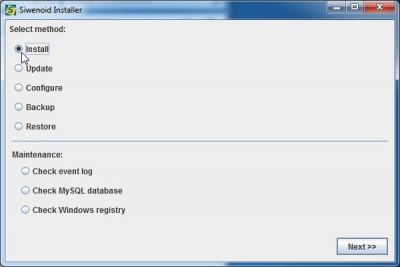
Select "Install" and then "Next>>".
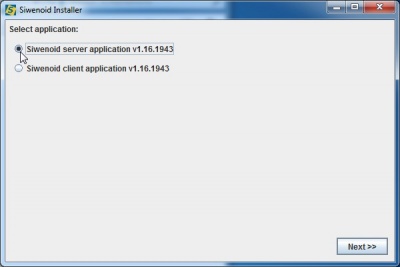
Select server application to install then "Next>>".
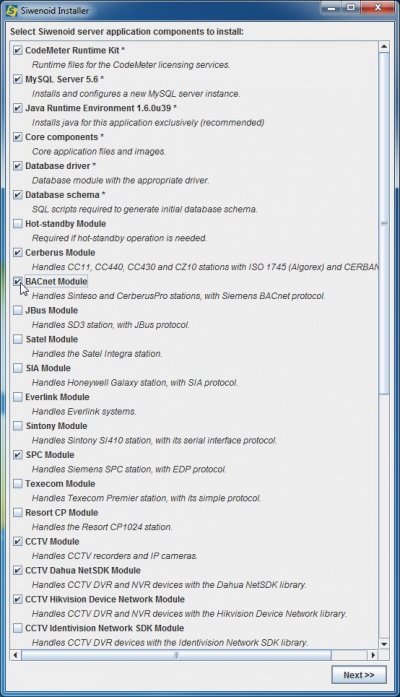
Select software components. Some are mandatories some are optionals. Then "Next>>".
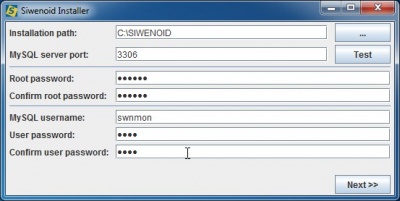
MySQL specific parameters. Always remember root and username password! Server port "3306" is default. In some case it can conflict existing installations. Use "Test" to make sure that it is not used on current computer.
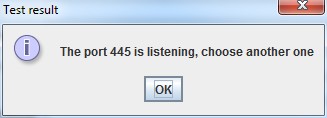
You get this message if a port has been used. Increment port number and test again.
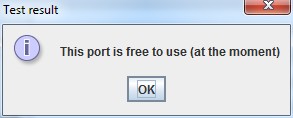
You get this message if it is OK. Then select "Next>>".
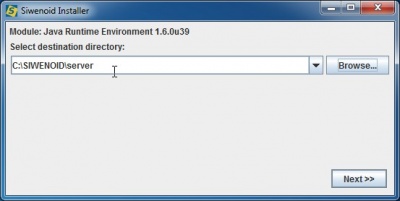
Select destination folder for server installation. Use "Browse..." to select or create destination folder. Always create a separate server and client folder. Never install them in the same folder.
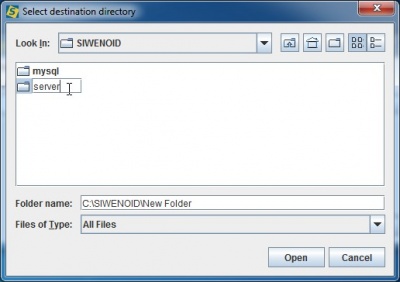
Create or select installation folder of server. Then click "Next>>" on previous dialog.
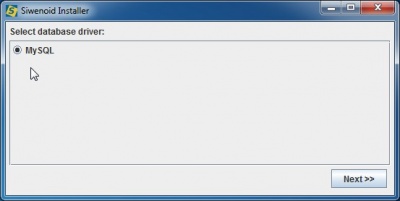
Simply click "Next>>".
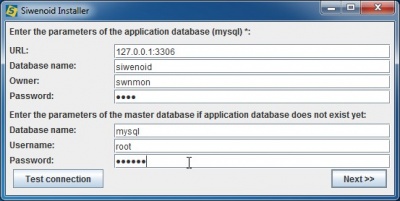
Define the parameters of MySQL installation. If you changed the port number before, then specify it in IP address. Passwords should be the same you defined before. When the parameters are filled in then "Test connection".

If connection succesfully tested then click "Next>>".
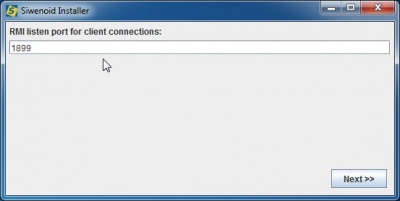
RMI service is the communication channel between server-client. 1899 is a standard port number. In most case it can remain on default. Click "Next>>".
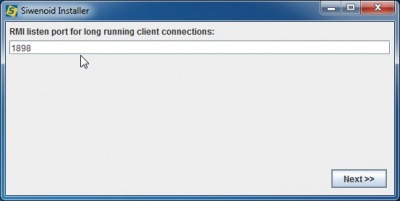
This port is also standard. Leave default. Click "Next>>".
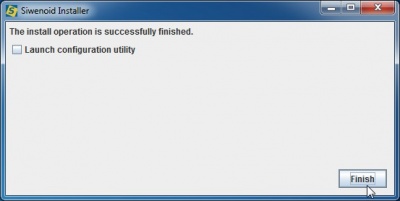
Simply click "Finish" without launching configuration utility. Utility is for advanced users.
Installation of client application
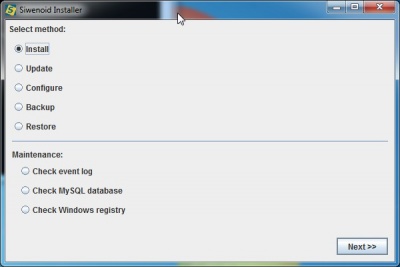
Select "Install" and then "Next>>".
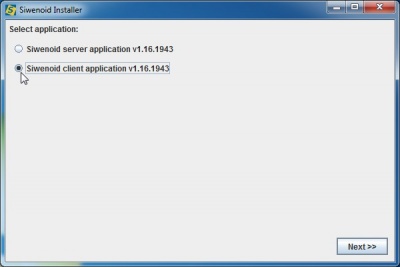
Select client application to install then "Next>>".
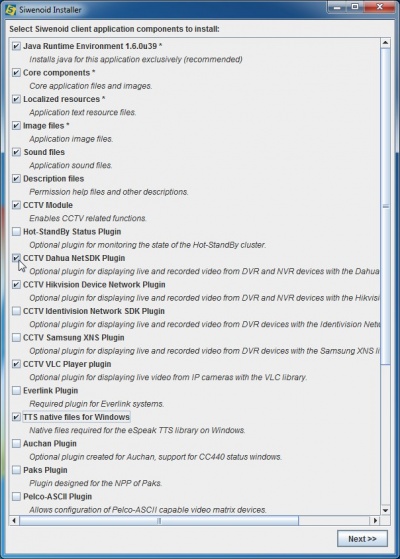
Select software components. Some are mandatories some are optionals. Never cause problem if you click more than necessary. Then "Next>>".
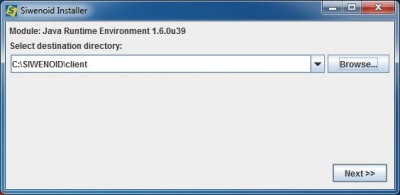
Select destination folder of client installation. Use "Browse..." to select or create destination folder. Always create a separate server and client folder. Never install them in the same folder.
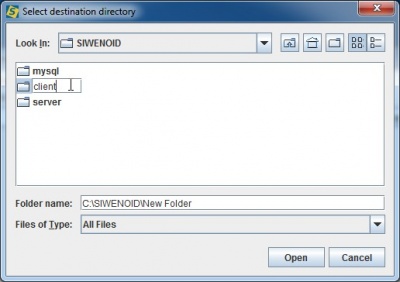
Create or select installation folder of client. Then click "Next>>" on previous dialog.
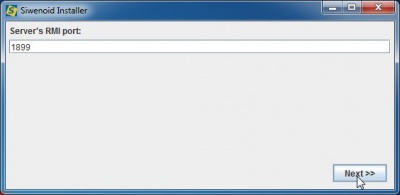
RMI port should be equal to the server RMI port. Normaly leave default. Click "Next>>".
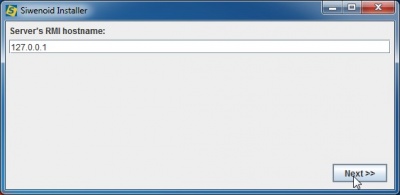
If server and client aren't installed on the same PC then define the IP address of server PC. Click "Next>>".
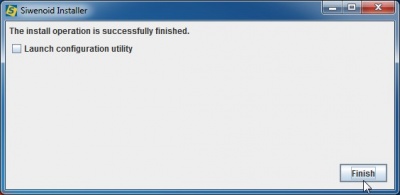
Simply click "Finish" without launching configuration utility. Utility is for advanced users.
Run server and client
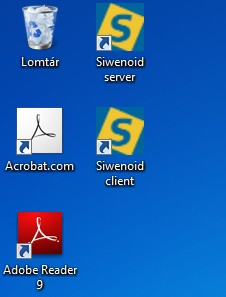
Installer creates desktop icons for the server and client applications. First launch server.
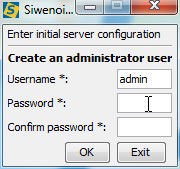
This is the first startup of server application thus you have to define an admin password. There is no default password in SIWENOID. Each installation can have its own admin password. Don't confuse this password of MySQL installation passwords!
Then server starts and makes some preparations (migrates treatment tables). The tray icon of server inform about this process. Finally server becomes "productive".

Launch client using the desktop icon. Login as admin. The system, is ready to configure.
Uninstall SIWNEOID

Launch client using the desktop icon. Login as admin. The system, is ready to configure.